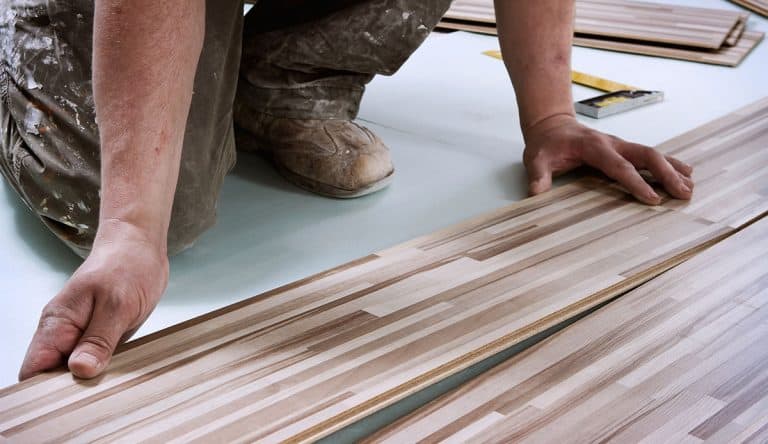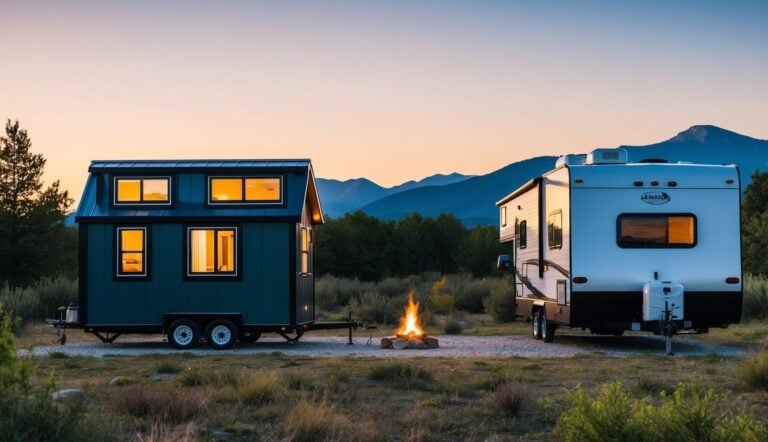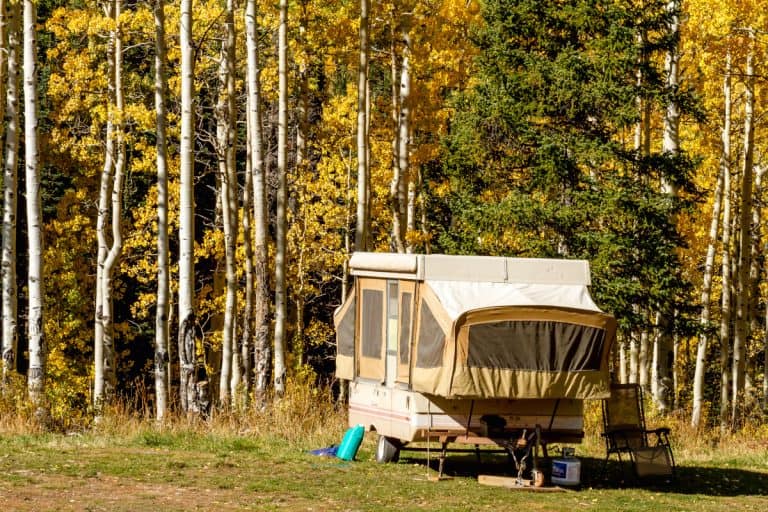Why Caravan Windows Mist Up and How to Prevent It
Caravan windows have a nasty habit of misting up, which can be both annoying and potentially worrisome, especially to new caravan owners. So why does this happen, and what can be done to prevent it?
Caravan windows are not completely sealed, meaning that, by design, they have a tendency to mist up and are in no way broken if they do. Taking certain measures to prevent excess moisture in your caravan and knowing what to do if it does become a problem can easily ensure clear windows and a well-maintained caravan.
Caravan windows are intentionally made to not be a completely sealed unit with the purpose of allowing the windows to ‘breathe.’ Although this is a helpful solution in preventing the growth of mold and mildew in the trailer, it does mean that condensation may sometimes form when the weather and temperature changes or if there is an excessive amount of moisture trapped within the caravan.
Understanding Caravans
Caravans, also known as travel trailers, campers, or camper trailers, are a small home-on-wheels that can be towed behind a vehicle. They are generally made primarily from fiberglass or aluminum sheet alongside plywood and polyurethane foam. They are built on wheels, but without their own motor, designed to be pulled by another vehicle. They come in a large range of sizes, from teardrop trailers that are only big enough for the bed within to multi-bedroom apartments on wheels.
One of the biggest enemies of caravans is mold, so caravan windows are not fully-sealed units in order to keep moisture from getting trapped inside.
Although this design generally works and caravan windows don’t regularly mist up, it can happen when the temperature inside the caravan is significantly warmer than it is outside or if there is not enough ventilation throughout the caravan itself.
Most caravan windows are double-glazed windows, meaning they are made of two acrylic and plastic panes that are bonded together. Moisture can get trapped between these two panes, although proper ventilation usually clears it up. If moisture persistently gets trapped, however, it can grow mold that will begin to cloud the visibility through the window permanently.
How to Prevent Condensation in Caravans
If your caravan frequently experiences misty windows, it could be a sign that your caravan does not get the proper ventilation, which can be worrisome as it could lead to other problems such as mold, mildew, and rot.MoThere are, however, some simple steps that can be taken to prevent ever having to deal with this problem.
- Dump out any water that may be sitting for a while, such as in kettles, pots, and coffee makers.
- Open any windows, doors, and skylights as frequently as possible to allow air to circulate throughout your caravan.
- Avoid taking a shower at night whenever possible as the water will generally evaporate better in the daytime.
- Avoid heating the van more than necessary at night.
- Use a fan and open windows when cooking or washing to allow any steam to evaporate.
- Use campsite facilities whenever possible, particularly in winter months, when the contrast of temperatures between the inside and the outside of the caravan is the most drastic and would lead to the greatest amount of condensation.
- Avoid hanging clothes to dry in the winter months. Although this may be a cheap and convenient way to dry clothes when the weather is warm, and the sun is out to dry up all of the moisture, this moisture has a greater chance of lingering in colder and grayer conditions.
- Ensure that your gray water tank (if your caravan has one) is emptied frequently and does not back-up into a sink or shower.
The key to preventing moisture inside your caravan is allowing all of the water to leave it or dry up. Ensuring that there is as little water inside your caravan as possible will not only keep your windows clear but also your walls dry and your caravan in better, more reliable overall shape.
How to Clear Condensation from Caravan Windows
- Open windows, doors, and vents to create maximum ventilation throughout your van.
- Park your caravan in a place where the sun can shine on the windows.
- Some caravans come with ventilation holes that may get clogged. Unclog these holes before parking your caravan in the sun so that the sun can naturally draw the water out through the ventilation holes. This process can also be sped-up by placing a warm towel on the outside pane of the window. The fibers of a towel will not prevent the evaporation from happening, but it will soak up the evaporated water to make it disappear from the window more quickly.
- If your caravan has poly-plastic window bungs, it is possible to remove these to create ventilation holes temporarily. Just be careful when removing these as they may be stuck, or they may drop between the two panes.
- Use a handheld window cleaner vacuum to suck out any trapped water. While these are made to collect water while cleaning windows, RV bloggers such as Kat from Wandering Bird claim that window cleaner vacuums are the easiest way to deal with condensation in motor-home windows.
This Prostormer window cleaner vacuum weighs in at under two pounds of weight and is conveniently cordless with a rechargeable Li-ion battery. - Use a dehumidifier to draw out any additional moisture that may be lingering in your caravan.
Dehumidifiers come in several different forms. The most powerful and effective type of dehumidifier would be something similar to this Lonove dehumidifier. It is an electric unit that draws moisture directly from the air and collects it. These types of units come in various capacities to accommodate a range of room or caravan sizes, and many, including this particular unit, even have gauges that tell you exactly what percentage of moisture is in the air.
Other types of dehumidifiers such as this DampRid Fresh Scent Hanging Bag Absorber use silica beads to draw moisture out of the air. There is no power required for these, and they can be hung or set anywhere there may be moisture, but they will generally absorb moisture at a slower rate than powered dehumidifiers do.
This video by Wanderful Revolution gives some great tips and tricks on preventing condensation and controlling moisture within any motor-home or caravan and also tests and reviews various types of dehumidifying products:
Caravan Helper also put together this useful list of their favorite dehumidifiers for caravans.
In Summary
Moisture is a caravan’s greatest enemy due to the mold, mildew, and rot it can bring about. This mold and mildew can grow to cloud windows, can transfer onto cushions and upholstery, and can even leak into the caravan. If water were to drip or leak too long, this could also lead to wood rot and additional mold and mildew on walls, floors, and ceilings.
Luckily, a slight misting of windows is completely normal and nothing to worry about as it is usually due to a contrast in temperatures and will clear up rather quickly. Even if this becomes a common occurrence and you begin to suspect that there may be more to the condensation on your windows than just a temperature change, the problem of excess moisture is generally simple to reduce with a few simple tricks and lifestyle adjustments.
Being conscious of the moisture created during cooking or washing as well as properly ventilating your caravan during either of these activities will drastically cut down on water that needs to evaporate. Keep the temperature of the caravan as low and consistent as possible to avoid drastic temperature changes that can cause condensation, and swiftly remove any trapped moisture if it does occur.
With these simple tricks for a caravan lifestyle in mind, you’ll be ready to take your caravan into any weather conditions with confidence.





